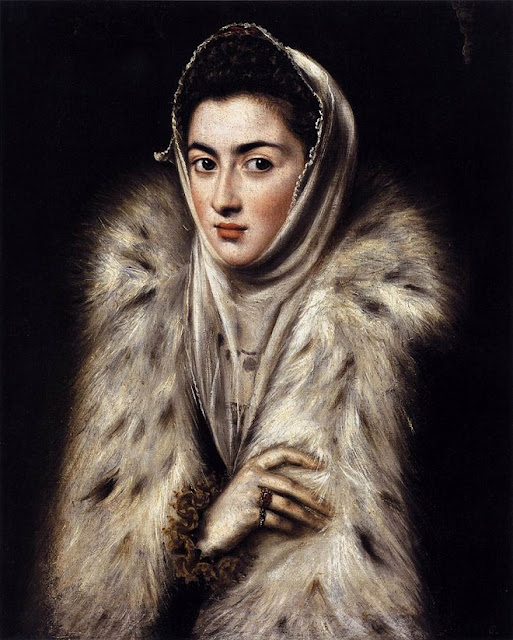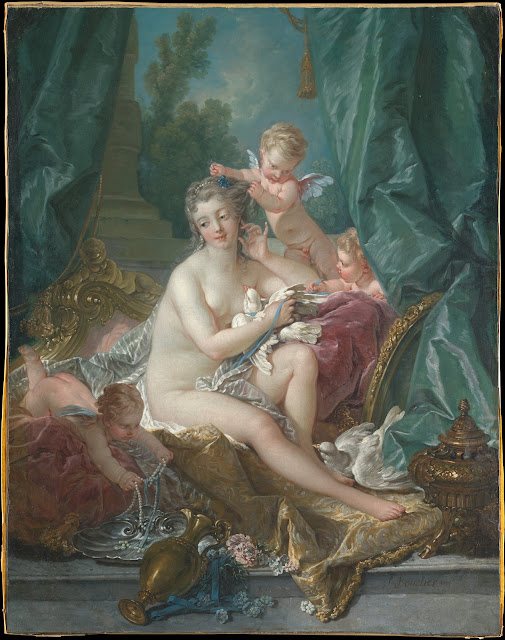Italian Renaissance: Sofonisba Anguissola
Sofonisba Anguissola
The Artist:
Studying Europe and the art of the Renaissance, I learned about the master of portraiture Sofonisba Anguissola. Until recently, I had no idea she existed, her name being overshadowed by legends like Michelangelo and Albrecht Durer. However, she was an internationally celebrated artist and master of her craft.
Born around 1532 in Northern Italy to Amilcare Anguissola and Bianca Ponzone, Anguissola, and her 5 sisters and brother were given a thorough education. In 1545 Anguissola's father, in an almost unheard of move, insisted his daughters pursue the arts more seriously and sent the artist and her sister to local artist Bernardino Campi to work as apprentices. The artist even exchanged letters through her father with Michelangelo himself, who critiqued her work and helped her grow her artistic skills. It was for a challenge that Michelangelo issued that Anguissola would sketch "Boy Bitten by a Crayfish", a piece that was likely the inspiration for Caravaggio's "Boy Bitten by a Lizard".
In 1559 Anguissola's reputation had reached other countries, and the King of Spain Philip II requested she become lady-in-waiting and tutor to his queen, Elisabeth of Valois. The two became close and, through this friendship, Anguissola secured not one but both dowries for her marriages from King Philip II. After leaving the Spanish court in 1579, she met and fell in love with and married Orazio Lomellino, and they settled in Genoa. Even in her later years, she still shared her knowledge and served as a patron for young artists. In 1624 Anguissola was visited by Anthony van Dyck, who spoke with her and painted a beautiful portrait of the now near-blind Anguissola. Van Dyck said this conversation taught him more about art than any other event in his life.
Anguissola passed away on November 16, 1625, and, despite creating such a legacy, would fade from history until the 1970s, when she was once again brought to the limelight with the Feminist movement in the West.
The Art:
One of Anguissola's better-known works, "Portrait of Catalina of Spain" is a wonderful example of the artist's skill. A youthful Catalina is presented as a pale figure against a dark backdrop, wearing expensive furs and jewels and staring directly at the viewer. Her hair is covered with sheer fabric and her hand reaches out to touch the furs, showing yet more jewelry.
Anguissola skillfully creates a three-dimensional form in the two-dimensional medium of oil on a canvas. The young Catalina appears so real that she might simply turn away from us should she become disinterested. The texture of the oils creates a richly vivid image, bringing her status as a daughter of the king to the forefront of the viewer's mind. The eye is drawn immediately to the subject’s dark, piercing eyes, the paleness of her skin (seen as a sign of high society and good breeding) enhanced by the darkness and the peach tint on her cheeks, completing the rosy, youthful appearance. Circular forms throughout further emphasize Catalina's young age. Our eyes move next to the furs, painted so lushly they appear soft to the touch. The linework here is delicate and thoughtful, seemingly without a pattern. Down toward the bottom of the painting, we see Catalina's bejeweled hand reaching out to pull the furs closer, and we catch a glimpse of her ruffled sleeve. One can see just a hint of the dark color of her dress, yet another sign of her wealth. The dyeing process used to make black clothes was an expensive one. The entire portrait is a frank display of wealth and status, as was the intention when it was made. Anguissola has met this demand with delicate brush strokes and linework that creates an image heavy with texture and life.
The part that stands out most to me is, of course, Catalina's face. Framed by dark negative space--as was the standard of High Mannerist paintings--you can see every detail as if looking at a photo. The sheer fabric of her headpiece is cleverly used to enhance her dark curls against the background and bring Catalina's beauty even closer to the viewer. Some historians believe this portrait was used when scouting for a husband for the young royal. I also noticed the somewhat monochromatic color scheme used here, simple but effectively centering the subject so the viewer's mind is on nothing else. The way Catalina looks directly at us is reflective of her personality as well, opinionated and proud. The personalities of her subjects were something Anguissola was hailed for capturing within her portraiture. To be able to recreate so fully the physical likeness as well as the true personality of a subject is not something easily done, yet the skillful artist produced many paintings just like this one. Her honed skills and artistic abilities were the reason many artists sought out her wisdom throughout her life, and indeed I surmise was the main reason she was so beloved at court.
Anguissola was a woman well ahead of her time in both skill and ambition. Her legacy would go on to inspire other women, such as Gentileschi and Fontana, to pursue art rather than life in the home. Though she was hardly a feminist herself, her ability to seamlessly bypass the societal expectations of her time and place speaks to someone of great intelligence. But Anguissola also had the privilege of opportunity and money to fuel her dreams, and it was remarked that she was “unlike” the other women of her time. An outlier, hardly a standard. Though she is certainly an artist worthy of celebration, I cannot help but wonder about the women who had the potential to be even greater, overlooked because of their sex and lowly status. Anguissola was a member of the upper class, as most of the legendary names of the Renaissance were. Her career was funded at first by her father and then by Spanish royalty, which solidified her place in history. Were it not for the efforts of King Philip II, we might never know her name, just as we will never know the names of countless artists who fall beneath the view of the rich, both ancient and modern. Though clearly problematic even in our own age, the fact remains that money has always played a key role in the popularization and preservation of priceless art and wisdom. In the Middle Ages, it was the men in power who determined art should be limited solely to documenting the moral lessons of Christianity. During the Renaissance, it was royalty and the Catholic Church that allowed artists to break free of that mold. The power of the wealthy played just as much, if not more, of a role in deciding the direction of moral and humanist ideals as the scholars themselves. If Anguissola had not played within these bounds, we would likely have never learned her name or story.
“Anguissola Paintings, Bio, Ideas.” The Art Story, www.theartstory.org/artist/anguissola-sofonisba/. Accessed 2 Oct. 2023.
Haggo, Douglas. “Sofonisba Anguissola.” YouTube, YouTube, 19 Mar. 2017, www.youtube.com/watch?v=5FQ_s6Goo68.
Kilroy-Ewbank, Dr. Lauren, and Dr. Lauren Kilroy-Ewbank. “Sofonisba Anguissola.” " Sofonisba Anguissola, smarthistory.org/sofonisba-anguissola/. Accessed 2 Oct. 2023.
Kuiper, Kathleen. "Sofonisba Anguissola". Encyclopedia Britannica, 28 Oct. 2022, https://www.britannica.com/biography/Sofonisba-Anguissola . Accessed 2 October 2023.
Wikipedia, Wikipedia. “Sofonisba Anguissola.” Wikipedia, Wikimedia Foundation, 28 Aug. 2023, en.wikipedia.org/wiki/Sofonisba_Anguissola#cite_note-Phaidon_Editors-1.



Comments
Post a Comment